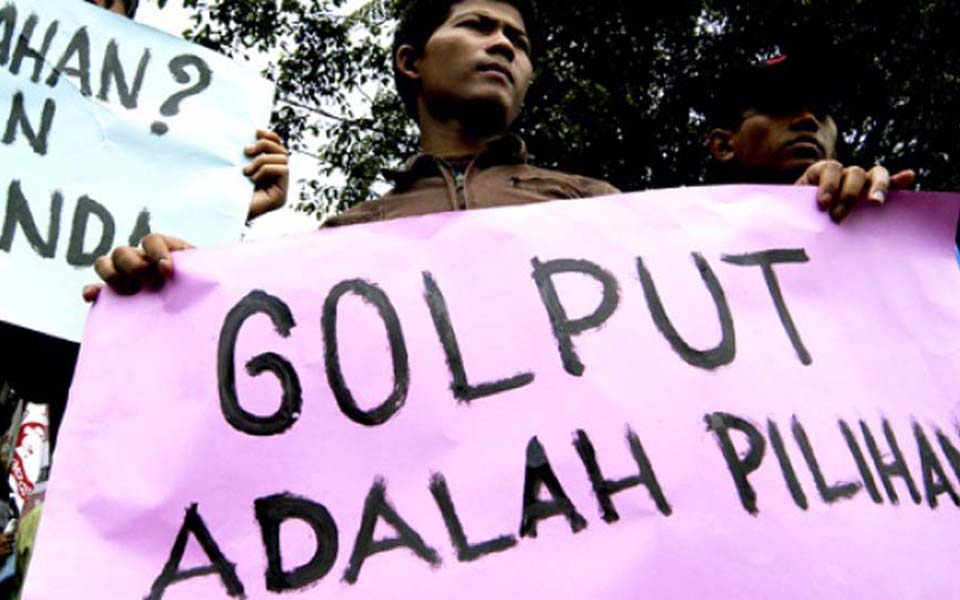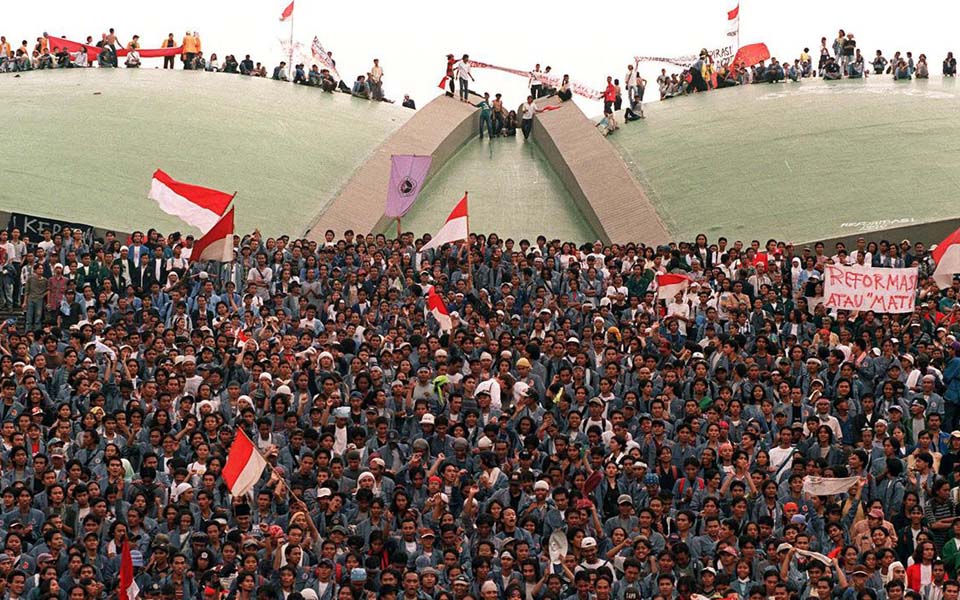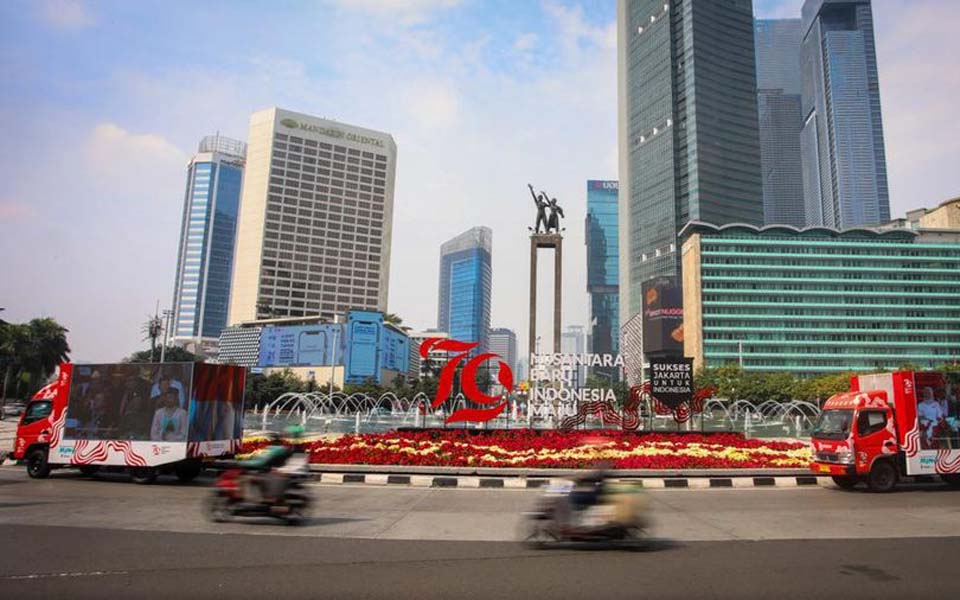Jakarta – In administrative terms, the potential for white movement or golput – people who don’t use their right to vote – remains high in the 2009 legislative and presidential elections. Based on the results of an Indo Barometer survey, only 67.2 percent of people think that are enrolled to vote.
This phenomenon was underlined by Indo Barometer Executive Director M. Qodari in Jakarta on Sunday January 11 in relation to the results of a national survey on the public’s knowledge and expectations with regard to the 2009 elections.
The survey was conducted in 33 provinces throughout Indonesia involving 1,200 respondents with a margin of error of around 3 percent. Respondents were chosen using a multistage random sampling method that represented the entire adult population in Indonesia aged 17 or above or already married. The survey was carried out independently by Indo Barometer.
Speaking in the Central Java city of Yogyakarta, Arie Sujito, a political observer from the University of Gadjah Mada Faculty of Social and Political Science, also predicted that the level of golput in the 2009 elections would increase compared with previous elections. This represents an accumulation of disappointment with the political parties on the part of the public.
The public believes that the political parties place more importance on extending their power rather than fighting for the interests of the people. The determination of elected legislative candidates based on a majority vote system, he said, will not correlate with a possible decline in the rate of golput because the public’s disappointment with the political parties has already reached the point where it will not recover, plus they are unacquainted with individual legislative candidates.
“I predict that golput in the 2009 elections will be between 35 and 40 percent. This is reflected in the high level of golput in the election of regional heads in different parts of the country”, he said.
According to Sujito, the three months left before the elections will make it difficult for the General Elections Commission (KPU) to socialise the elections adequately in order to combat the growth in golput, never mind the fact that the KPU still has to take responsibility for the heavy burden of logistical procurement. “The political parties must help the KPU carry out socialisation”, he said.
Serious concerns
In the Indo Barometer survey, when respondents were asked if they thought they were enrolled to vote in the 2009 elections, as many as 67.2 percent answered “yes”, 18.3 percent answered “no” and the remaining 14.5 percent answered “Don’t know” or did not answer.
This phenomenon is very worrying. Never mind that it is projected that the number of eligible voters in the 2009 elections should be 172 million people, meaning that only 115.58 million people think that they are enrolled to vote while 31.48 million believe they are not and 24.94 million don’t know.
By way of comparison, in the 1999 general elections, out of the 117.73 million registered voters, only 7.88 million (6.7 percent) failed to turn up on voting day. In the 2004 elections, out of a registered 148 million voters, 23.53 million (15.9 percent) failed to vote.
The Indo Barometer survey also recorded that only one half of voters (51.8 percent of respondents) actually know that the legislative elections will be held in April. As many as 25.5 percent do not know or did not answer when asked on which month the legislative elections will take place.
Responding to the survey results, KPU Chairperson Abdul Hafiz Anshary stated that they would be endeavoring to seek greater legitimacy so that voter lists can be updated even though in the past this has attracted many protests.
Anshary explained that the body collecting direct data on voters is not the KPU but the Department of Home Affairs. He compared these survey results with the achievements of the 2004 elections where out of a population of 214.8 million, 148.3 million people voted while 66.6 million did not.
Center for Electoral Reform (Cetro) Executive Director Hadar N. Gumay said they support the KPU’s endeavour to renew voter enrolment lists by reopening enrolments for those who are not registered. “The elections should be orientated towards facilitating voters. Because of this therefore, it doesn’t matter if [voter enrollment] is reopened”, he explained.
Golput not political opposition
Speaking in Jakarta on Saturday, University of Indonesia Faculty of Social and Political Science lecturer Andrinof A. Chaniago said that golput in Indonesia as genuine political oppositions is only happening in small numbers. It is the weaknesses in the system that is magnifying the size of golput.
Chaniago said that the level of golput will only be high if it also calculates those who do not care enough about or lack awareness about the goals of the elections. The other component of golput is weaknesses in the enrollment system and the updating of voter data.
Elections and Democracy League (Perludem) Chairperson Didik Supriyanto added that golput in the 2009 elections will increase because the people’s growing sense of dissatisfaction is reaching a peek. Successive and scattered elections (elections of regional heads) along with the behaviour of elected political leaders has left people fed up.
Every single election brings about a mental burden because the people become involved in rivalries and conflicts. Yet the political system does no allow for voters to punish electoral participants. (SUT/RWN/DIK)
[Translated by James Balowski. The original title of the articles was “2009 elections – Potential for golput in administrative terms still high”.]















